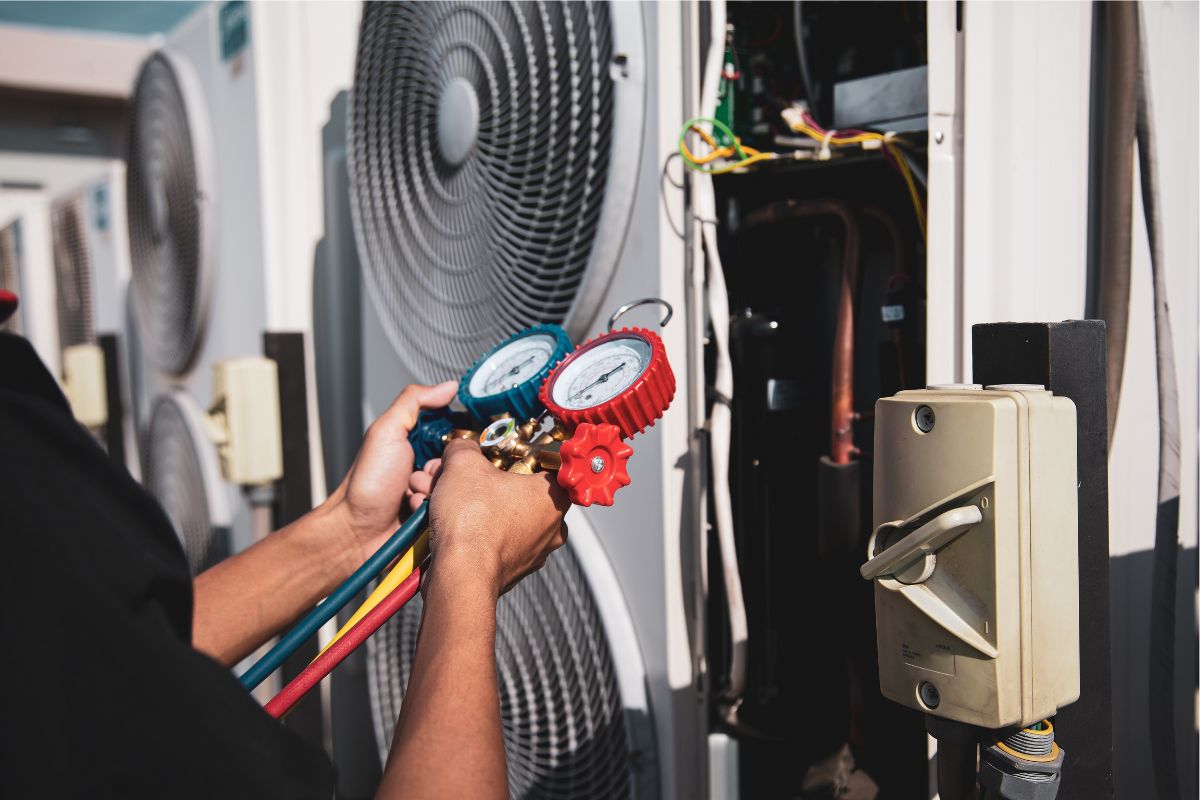The benefits of investing in commercial retrofits for HVAC systems can be substantial, from lower operating costs to improved efficiency and performance. However, these upgrades require long-term investment as well as an understanding of the entire process from start to finish. In this blog, we’ll discuss the basics you need to know about commercial retrofits in order to make sure your project is successful. We’ll go over what a commercial retrofit is and some of its potential advantages; explain considerations that should be taken into account prior to starting any work; and lastly provide tips on how you can best manage the project once it’s underway. Whether you are a HVAC contractor or facility manager responsible for maintaining building performance — this article will help give you confidence and prepare you for success with your upcoming project!
What to know about commercial retrofits
Commercial retrofitting refers to the process of making improvements or upgrades to existing commercial buildings or equipment in order to improve their efficiency, functionality, or safety. Businesses can benefit greatly from retrofitting their buildings or equipment, including increased energy efficiency, lower maintenance costs, enhanced safety and security, and improved comfort for occupants. There are a variety of retrofitting options available for different types of buildings and equipment, including everything from lighting and HVAC upgrades to building envelope improvements and renewable energy systems. By investing in commercial retrofits, businesses can not only improve their bottom line, but also make a positive impact on the environment.
Explanation of the various types of retrofits available

Commercial retrofits are a core aspect of modern building design and renovation techniques. These retrofits mostly involve upgrades to the existing building systems for better functionality and energy efficiency. The field of commercial retrofits has expanded significantly in recent years, with many different options available to property owners.
Some of the most common types of retrofits include replacing outdated lighting fixtures with energy-efficient LED bulbs, upgrading HVAC systems to smarter and more efficient models, and installing insulated windows and doors to reduce heat loss. Other retrofits may involve redesigning floor plans or adding insulation to walls and ceilings. Regardless of the specifics, the goal is always the same: to reduce energy use, minimize costs and ensure a more comfortable and sustainable working environment for all.
Discussion on energy efficiency and cost savings associated with commercial retrofits
As the market and consumers become increasingly environmentally conscious, the demand for energy-efficient buildings has escalated. Commercial retrofits offer a cost-effective solution for enhancing energy efficiency in commercial properties. This type of retrofitting can include updating outdated equipment, installing smart sensors, improving insulation, and much more.
One of the most significant benefits of implementing these retrofits is the long-term cost savings they provide. By utilizing more efficient technologies and optimizing energy usage, these retrofits not only reduce operating costs but also help in reducing carbon footprint.
Additionally, retrofitting can contribute to an improved perception of the facility, making it more attractive to tenants and customers. In other words, commercial retrofits not only help in conserving energy but also increase a building’s value. Overall, implementing energy-efficient retrofits offers an opportunity for building owners and managers to improve their bottom line while contributing to a more sustainable future.
Tips for selecting the right retrofit option for your business
As more businesses move towards sustainability, commercial retrofits have become a popular solution to reduce energy consumption and carbon footprint. However, selecting the right retrofit option can be intimidating and overwhelming. It is crucial to consider factors such as the age and type of building, the energy saving goals, and the budget. Conducting an energy audit can help identify areas that require improvement and determine the most cost-effective retrofits. Business owners should also research and consult with experts to ensure they choose the best option for their needs. With careful planning and consideration, selecting the right retrofit can lead to significant energy savings and a positive impact on the environment.
Guidelines for assessing the financial feasibility of a commercial retrofit
When it comes to undertaking a commercial retrofit, one of the most important factors to consider is the financial feasibility. There are a number of guidelines that can be followed to help assess this feasibility, taking into account various factors such as the initial costs of the retrofit, potential savings on energy bills, and any incentives or financing options that may be available.
By carefully evaluating these factors, businesses can determine whether a retrofit is truly a wise investment, and take steps to optimize their return on investment. At the end of the day, commercial retrofits have the potential to deliver significant cost savings, reduce carbon footprints, and enhance the overall sustainability of businesses. With careful planning and a thorough understanding of the financial implications, companies can leverage these benefits while minimizing risk and ensuring a successful retrofit.
Benefits of hiring professionals to complete a commercial retrofit project
Undertaking a commercial retrofit project can be a daunting task, but it doesn’t have to be. Hiring professionals to complete this project could be one of the best decisions you make. Professionals can bring their expertise and experience to the table, allowing the project to progress smoothly while adhering to timelines. Their knowledge of the latest technologies and materials will ultimately lead to a sustainable building that is not only energy-efficient but can also help reduce overhead costs. Using professionals for commercial retrofits provides peace of mind while ensuring the project is done efficiently, within budget, and up to code. They can help you navigate the complexities of the process while minimizing disruptions to your day-to-day operations. The benefits of hiring professionals are not just limited to the construction phase, but will be felt for years to come.
Conducting commercial retrofits with Air Ideal
Commercial retrofits don’t have to be difficult. With the experts at Air Ideal, we have the wherewithal to get any and all of your retrofitting work done. To learn how, please visit our website and contact us today!



